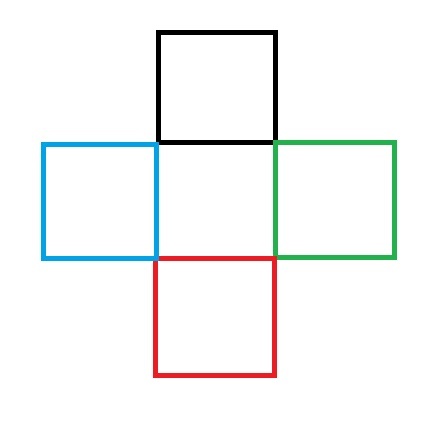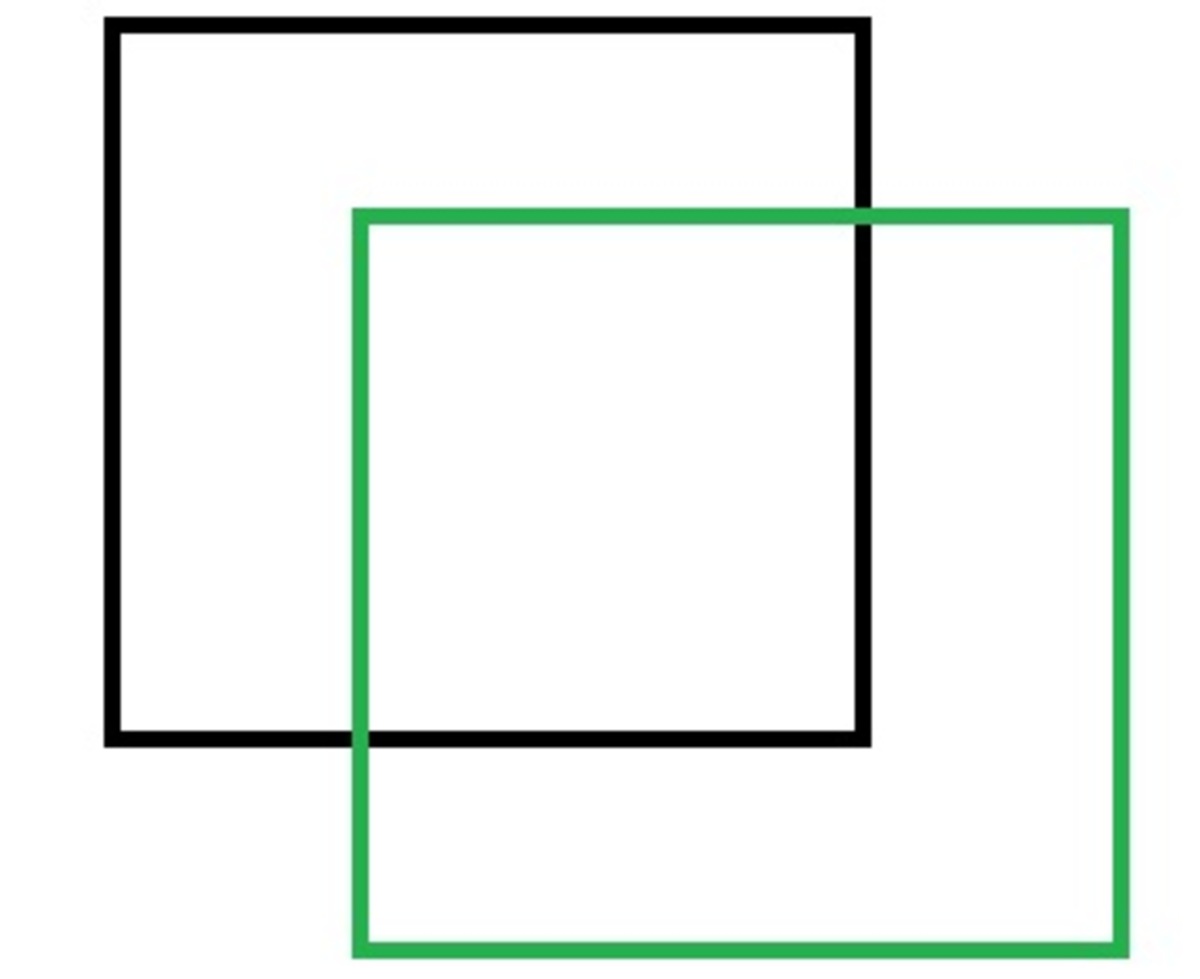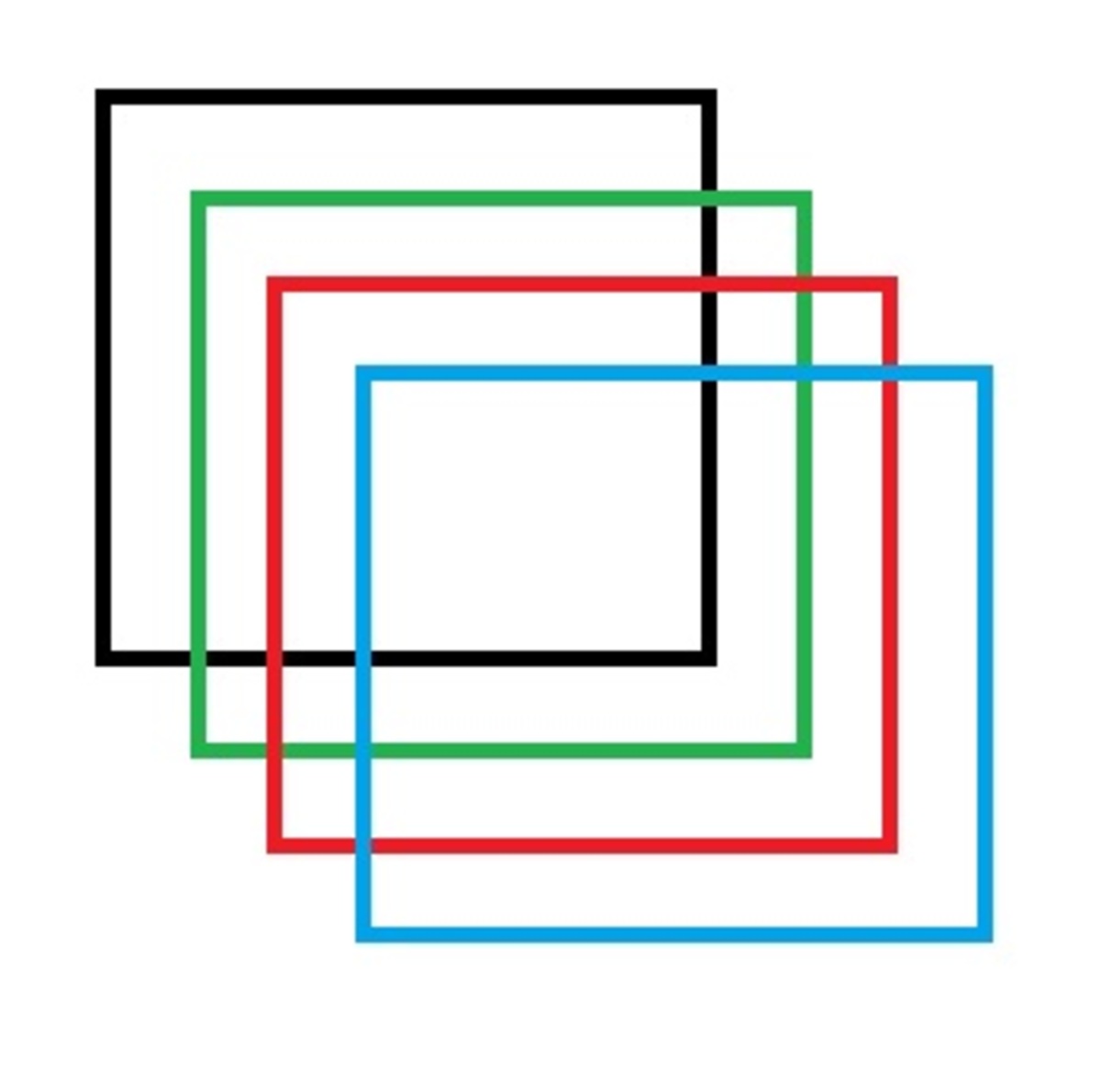Maximizing these squares! 2
You are given four squares as shown of equal side length.

What are the maximum number of squares of any size that can be made by overlapping the squares in every possible way.
N O T E : You have to give the number of squares formed by only one of the combination, in which the maximum number of squares are formed.
This section requires Javascript.
You are seeing this because something didn't load right. We suggest you, (a) try
refreshing the page, (b) enabling javascript if it is disabled on your browser and,
finally, (c)
loading the
non-javascript version of this page
. We're sorry about the hassle.
2 solutions
A
s
q
u
a
r
e
can be
f
o
r
m
e
d
from
t
w
o
s
q
u
a
r
e
s
when they both
c
u
t
e
a
c
h
o
t
h
e
r
t
w
i
c
e
(thus, a square formed is made by
t
w
o
s
i
d
e
s
o
f
o
n
e
s
q
u
a
r
e
and
t
h
e
o
t
h
e
r
t
w
o
s
i
d
e
s
of the
o
t
h
e
r
s
q
u
a
r
e
)

So, from f o u r squares maximum number of squares are possible only when e a c h o n e o f t h e m cut the other t h r e e t w i c e .
And we get this:

Great question :+1: Had fun solving
To get maximum number of squares by a combination, we have to arrange them in such a way that their corresponding edges lie in the line segment connecting the opposite ends of a square (or in other words, they should lie on the diagnol of a square.
In this question we should make the following figure.
There are 1 6 squares in the figure above and that is the maximum possible squares.